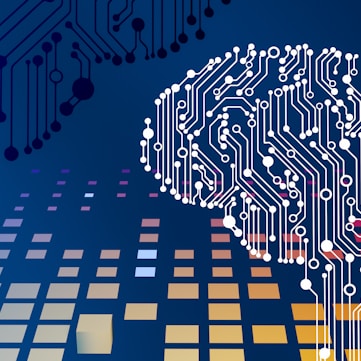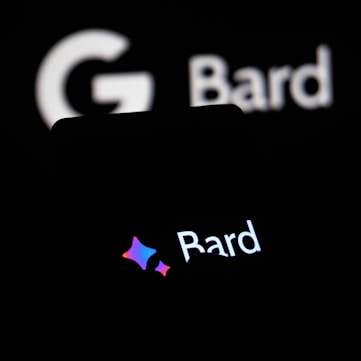
THE AUTOMATION OF MENTAL POWER: THE NEXT INDUSTRIAL REVOLUTION
The Industrial Revolution replaced human muscle with machines. The Fourth Industrial Revolution is replacing human brains with machines. Artificial intelligence is already capable of performing many tasks that were once thought to be the exclusive domain of humans. It can diagnose diseases, write creative content, and even drive cars.
A recent survey found that 49% of companies are already using artificial intelligence in some capacity, and that number is expected to grow to 70% by 2025. The impact of artificial intelligence on the workforce is still unclear. Some experts believe that it will lead to mass unemployment, while others believe that it will create new opportunities.
However, one thing is for sure: the automation of mental power is already underway in this decade, and it is likely to have a profound impact on our society.
Artificial Intelligence for a Sustainable Future of Mining:
Optimizing Efficiency and Minimizing Impact (*)
The mining sector is undergoing a significant transformation in tandem with technological advancements, and at the forefront of this revolution is Artificial Intelligence (AI). Artificial Intelligence has played a crucial role in providing more efficient, secure, and sustainable solutions for mining operations.
Sustainability in Mining: More Efficiency, Less Impact
Mining activities contribute to economic development by extracting natural resources, but they also bring along environmental and social impacts. Sustainability in mining aims to minimize these effects while ensuring the ability to meet the needs of future generations without compromising the requirements of the present.
Usage of Artificial Intelligence in Mining Operations: Current Status and Examples
As mining operations become more sustainable, the need for AI solutions will only increase. Understanding how artificial intelligence (AI) technologies are utilized in mining operations plays a critical role in shaping the future of the industry. Artificial intelligence operates effectively in three main stages:
Data analysis: Analyzing data obtained from operations provides the necessary information to train optimization models.
Modeling: AI is used to predict the performance of alternative values.
Automation/optimization: Utilizing AI for time, cost, and resource savings enhances productivity, efficiency, and profitability.
These stages illustrate how artificial intelligence can be effectively utilized in mining. Globally, numerous leading mining companies are at the forefront of adopting artificial intelligence. Such as
Rio Tinto
BHP
Freeport-McMoRan
Anglo American
Vale
Glencore
Newmont
Teck Resources
These companies are just a few examples that strive to gain a competitive advantage by embracing artificial intelligence and other advanced technologies.
Ways of Using Artificial Intelligence in Mining:
1. Rio Tinto - Oyu Tolgoi Mine (Canada)
Rio Tinto has utilized artificial intelligence at the Oyu Tolgoi mine in Canada to conduct a detailed analysis of the physical and chemical properties of ore and waste rock. This process played a crucial role in determining the most efficient enrichment process for the ore. Additionally, artificial intelligence is employed to more accurately predict ore content and recoverable ore volume.
2. BHP - Olympic Dam Mine (Western Australia)
BHP, at the Olympic Dam mine in Western Australia, has employed artificial intelligence to create a model simulating how to enrich ore by using data that includes the physical and chemical properties of ore and waste rock. Simultaneously, it has facilitated more efficient mapping of mine deposits, aiding in the swift and effective identification of ore-rich areas. Furthermore, BHP actively utilizes artificial intelligence to reduce water usage and energy consumption.
3. Freeport-McMoRan - Grasberg Mine (Indonesia)
Freeport-McMoRan has applied artificial intelligence at the Grasberg mine in Indonesia to analyze the physical and chemical properties of ore and waste rock. This analysis helps predict how the ore will behave in various enrichment processes. The company has also used artificial intelligence to enhance the safety of mine workers by identifying potential hazards in excavation, thereby reducing the risk of injuries.
4. Vale (Brazil)
Brazil-based Vale employs artificial intelligence and automation technologies in its operations. Data analysis and remote monitoring systems are used to increase productivity and ensure safety.
5. Newcrest Mining (Australia)
Australian-based Newcrest Mining focuses on using artificial intelligence and machine learning in gold mining. Its efforts are concentrated on determining mineral reserves and optimizing mining operations.
6. Anglo American
Anglo American, as a company focused on digitization in mining operations, actively uses artificial intelligence and automation for improving operational processes and enhancing safety.
These companies represent just a few examples in the mining industry striving to gain a competitive advantage by embracing artificial intelligence and other advanced technologies. Throughout the mining industry, many more companies are investing in similar technologies.
Mining with Artificial Intelligence: Roadmap to the Future
The most critical financial metric used for evaluating the financial performance of mining operations is Net Present Value (NPV). A higher NPV implies that a mining project may be more attractive and profitable. However, there are numerous uncertain factors influencing NPV, and their optimization is essential for achieving maximum profitability.
Key Areas of Optimization
Some crucial areas of optimization include:
Quality and Quantity of Ore Produced Annually: The quality and quantity of mineral reserves are fundamental factors determining the total revenue and, consequently, NPV. The ideal value should be determined through optimization.
Operational Costs: The operational costs of mining operations, including equipment, energy, labor, and other operational expenses, are crucial factors requiring the determination of optimal values for different production capacities.
Production Rate and Capacity: The production rate and capacity of the mine impact cash flows. While higher production generally means higher income, finding the optimal point is crucial.
Financing Conditions: The financing conditions used significantly affect the financial performance of the project. Interest rates, borrowing costs, and capital structure are important parameters that should be evaluated for different scenarios.
Cut-off Grade: Cut-off grade should be determined concerning mine production rate, plant production capacity, and sales conditions and incorporated into the optimization process.
Enrichment Plant Parameters: Determining the financial conditions for the investment amount related to the capacity of the enrichment plant, which will vary for different production rates in the mining field, is crucial.
Uncertainties and Variables
The aforementioned uncertainties should be addressed with optimization models to determine the most ideal production figures. These fundamental uncertainties include variables such as:
• Ore quantity
• Overburden quantity
• Cut-off grade values
• Mining operation costs
• Investment amount for the enrichment facility
• Ore recovery conditions
• Investment amount for mining equipment
• Financial resource alternatives
• Mining sale price
• Environmental and social factors
Future Potential of AI in Mining
In the future, artificial intelligence will become more widespread in the mining sector, potentially revolutionizing the industry. My speculations on how artificial intelligence technology can evolve in mining operations and be utilized in new areas encompass strategic planning.
In the future, by analysing trends and risks in financial markets, AI will contribute to assisting investors in making better investment decisions and aiding companies in developing more effective strategies. However, the critical factor in achieving this is the active involvement of technical teams, namely engineers, in data analysis and artificial intelligence modelling processes.
Artificial intelligence has the potential to revolutionize the mining industry by helping companies optimize NPV, manage uncertainties, and develop more effective strategies. By working together, technical teams and AI experts can ensure that AI is used responsibly and effectively in the mining industry.
Artificial Intelligence Strategies for Maximum NPV and Sustainable Mining
This article has demonstrated that artificial intelligence, coupled with strategic planning, holds the key to maximizing Net Present Value (NPV) and unlocking a sustainable future for the mining industry. Through dynamic production optimization, predictive maintenance, and data-driven decision making, AI can empower mining companies to achieve operational excellence while minimizing environmental impact. By optimizing resource extraction, reducing waste, and improving safety, AI can contribute significantly to sustainability goals. As the industry embraces these transformative technologies, it can pave the way for a future of responsible mining that maximizes profitability and safeguards the environment for generations to come.
Recommended Actions
To realize the full potential of AI in mining, companies should:
• Invest in the development of AI skills and expertise within both technology and engineering teams.
• Partner with AI experts to collaborate on solution development and implementation.
• Establish clear guidelines for responsible AI use.
• Integrate mine engineers throughout the process, leveraging their industry knowledge for effective deployment.
• Invest in infrastructure and processes for robust data collection and analysis to fuel AI models and ensure continuous improvement.
By taking these steps, the mining industry can ensure that AI is used to create a more sustainable and profitable future for all.

















(*)This blog post was created with the support of ChatGPT (OpenAI) and Bard (Google AI). January 2024
To put it simply, We are moving towards a period in which all companies that do not use artificial intelligence and are unable to adapt it to their business will be losers and will go bankrupt.The future of business belongs to companies that embrace artificial intelligence. Those that don't will be left behind.


Artificial Intelligence and Sustainability: The Energy Dilemma
Artificial intelligence (AI) is a rapidly developing technology with the potential to transform many aspects of our lives. AI has the potential to improve energy efficiency, resource utilization, and environmental impacts. However, AI applications require a significant amount of energy to operate. This is because AI applications are trained on massive datasets, which require large amounts of computing power. The energy consumption of AI applications is a potential challenge to sustainability. According to a recent study, AI is expected to increase global energy consumption by 2.5% by 2040. This is equivalent to about 5% of current global energy consumption.
ChatGPT, Bard, Copilot, Scispace, and Perplexity are large language models (LLMs) that are trained on massive datasets of text and code. They require a significant amount of computing power to train and operate. The average energy consumption of an AI application is 1-10 watt-hours per question.
